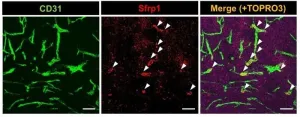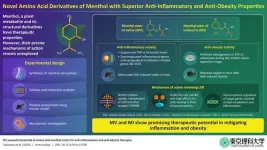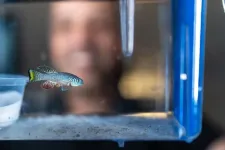Cancer is a leading cause of death globally. One of the primary reasons why cancer is such a deadly disease is the ability of cancer cells to become drug-resistant. After decades of medical research, scientists came to understand that malignant tumors often harbor a special population of cells called cancer stem cells (CSCs). Much like normal stem cells, CSCs can self-renew and differentiate into various cell types within a tumor, playing important roles not only in tumor growth and metastasis but also in the development of drug resistance.
Unfortunately, developing therapies targeting CSCs directly has proven quite challenging, given their ability to adapt and repopulate. Thus, some researchers have directed their attention to the blood vessels within the tumor tissue. Over the past few years, researchers have found that certain subpopulations of endothelial cells (cells lining the blood vessels) secrete angiocrine factors, which regulate the proliferation and maturation of stem cells. Understanding which cells produce these factors and their functions in the tumor microenvironment can, in turn, lead to novel cancer therapies.
Against this backdrop, a research team from Japan, including Professor Hiroyasu Kidoya and Dr. Yumiko Hayashi from the Department of Integrative Vascular Biology at the Faculty of Medical Science at the University of Fukui, conducted a study on secreted frizzled-related protein 1 (Sfrp1)—an angiocrine factor—to clarify its role in tumor tissues. Their findings were published online in the journal In Vitro Cellular & Developmental Biology – Animal on April 16, 2024.
“While blood vessels are usually considered merely a supply route for oxygen and nutrients, our research focused on a completely different function of blood vessels, namely the production of angiocrine factors. We conducted this research with the idea that angiocrine factors might also be involved in tumor progression and aimed to elucidate whether Sfrp1 affects CSC maintenance and that of the tumor tissue as a whole,” explains Prof. Kidoya.
To shed light on these issues, the researchers bred Sfrp1-knockout (KO) mice using CRISPR-Cas9 genome editing. Then, they transplanted lung carcinoma tumors into Sfrp1-KO and wild-type mice and observed the effects of Sfrp1 (or the lack thereof) using standard techniques, such as immunostaining, flow cytometry, and quantitative genetic expression analysis.
Initial experiments revealed that Sfrp1 is produced in a small subset of vascular endothelial cells in tumor tissue and that its presence is important for tumor growth. Not only was the tumor growth suppressed in Sfrp1-KO mice, but transplanted tumor cells overexpressing Sfrp1 gave rise to faster growing tumors.
Interestingly, researchers found that Sfrp1-deficient tumors could not maintain substantial CSC populations during the late stages of tumor growth, even though these tumors had a higher initial percentage of CSCs. This finding is particularly important as it hints at one of the biological roles of Sfpr1 in the tumor microenvironment and its involvement in cancer pathology. “Some CSCs in tumor tissues exist in a state of arrested cell proliferation, and their presence contributes to tumor growth and resistance to anticancer drugs,” explains Prof. Kidoya. “Our results indicate that Sfrp1 may regulate CSC self-renewal and transient malignant growth, and act to maintain a dormant state.”
Further cementing these results, the researchers noted that Sfrp1 did not affect the structure of blood vessels within the tumor, implying that the observed effects on tumor growth were unrelated to vasculature. Instead, genetic expression analyses revealed that Sfrp1 contributes to CSC maintenance by modulating the well-preserved Wnt signaling pathway (an evolutionarily conserved pathway that regulates crucial aspects of cell fate determination, cell migration, and organogenesis during embryonic development).
Overall, the newfound knowledge provided by this work could pave the way for the development of new cancer therapies targeting mechanisms that help maintain CSCs. “Targeting specialized vascular endothelial cells involved in producing angiocrine factors could help destroy the CSC niche, serving as a potential approach for inhibiting tumor growth with minimal side effects,” concludes Prof. Kidoya. “I believe this could lead to the development of treatments for intractable cancer patients whose tumors exhibit resistance to anticancer drugs as well as therapeutic agents to suppress cancer recurrence and metastasis.”
Further research building on these findings will serve as a stepping stone to effective therapies for drug-resistant cancer.
About University of Fukui, Japan
The University of Fukui is a preeminent research institution with robust undergraduate and graduate schools focusing on education, medical and science, engineering, and global and community studies. The university conducts cutting-edge research and strives to nurture human resources capable of contributing to society on the local, national, and global level.
Website: https://www.u-fukui.ac.jp/eng/
About Professor Hiroyasu Kidoya from University of Fukui, Japan
Hiroyasu Kidoya obtained his PhD degree from Osaka University in 2008, where he served as Assistant Professor and Associate Professor for over a decade. He joined the University of Fukui in 2021 as a full Professor. He specializes in the vascular biology, covering diverse topics such as angiocrine factors, angiogenesis, developmental biology, and tumor biology. He has published over 65 scientific papers and is a member of the Japan Society for Cell Biology, The Japanese Vascular Biology and Medicine Organization, and The Japanese Cancer Association.
Funding information
This study was supported by the Japan Society for the Promotion of Science (JSPS) KAKENHI (grant numbers: 23H03860, 23H03862, and 19H03503), PRESTO-JST (grant number: JPMJPR1944), JST FOREST Program (grant number: JPMJFR2160), University of Fukui Fund for promotion of Collaborative Research"Reff" 2022-2023, a grant for the next generation of outstanding researchers project of the University of Fukui, and Joint Usage and Joint Research Programs, the Institute of Advanced Medical Sciences, Tokushima University.
Media contact:
Naoki Tsukamoto
University of Fukui PR center
sskoho-k@ad.u-fukui.ac.jp
END






